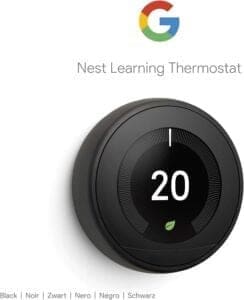If you’ve ever wondered how you can save some extra cash on your utility bills, it might be time to consider home automation. With the advancement of technology, your home can become smarter and more energy-efficient, which can ultimately lead to significant savings. From controlling your thermostat remotely to monitoring your energy usage, home automation offers a range of possibilities that can help you cut costs without sacrificing comfort. So, if you’re looking to reduce your monthly bills and make your life more convenient, read on to discover how home automation can be your money-saving secret weapon.
How Does Home Automation Work?
Overview of home automation technology
Home automation involves the use of technology to control and automate various aspects of your home, from lighting and temperature to security and appliances. It allows you to remotely monitor and control your home’s systems, providing convenience and potentially leading to energy savings.
Types of home automation systems
There are different types of home automation systems available in the market. Some systems use a centralized hub to communicate with various devices, while others rely on individual devices that can be controlled independently. Examples of common home automation systems include smart thermostats, lighting systems, power strips, and leak detection devices.
Energy Efficiency Features of Home Automation
Smart thermostats and temperature control
One of the key ways home automation can help save money on utility bills is through the use of smart thermostats. These devices can detect patterns in your temperature preferences and adjust the heating or cooling accordingly. They also enable remote control, so you can adjust the temperature even when you’re away from home. By optimizing temperature settings and avoiding unnecessary energy consumption, smart thermostats can lead to significant energy savings.

Automated lighting and energy-efficient bulbs
Automated lighting systems allow you to control the lighting in your home from anywhere, using timers, sensors, or mobile apps. By turning off lights automatically when rooms are unoccupied or scheduling lights to turn on only when needed, you can reduce energy wastage. Additionally, using energy-efficient bulbs such as LED lights further contributes to energy efficiency and cost savings.
Smart power strips and outlets
Smart power strips and outlets enable you to control the power supply to multiple devices with a single command or through scheduling. They also provide the ability to monitor energy consumption of individual devices, allowing you to identify energy-draining appliances and make adjustments accordingly. By eliminating standby power consumption and optimizing the use of electricity, smart power strips and outlets can help reduce utility bills.
Leak detection and water conservation
Home automation systems can also include leak detection devices that monitor water flow and detect leaks or abnormal consumption patterns. By promptly alerting you to potential leaks, you can take immediate action to minimize water-related damages and wastage. Additionally, some systems provide water management features that enable you to control irrigation systems and monitor outdoor water usage. This helps conserve water and reduce water utility costs.
Monitoring and Control for Optimal Energy Usage
Real-time monitoring of energy consumption
Home automation systems often come with energy monitoring features that allow you to track and analyze your home’s energy consumption in real time. Some systems provide detailed insights and reports on energy usage, allowing you to identify areas of high consumption and make informed decisions about reducing energy waste.
Remote control of home appliances
With home automation, you can remotely control your home appliances, such as adjusting the settings on your refrigerator, dishwasher, or washing machine. This allows you to optimize their energy usage based on your specific needs and schedules. For example, you can delay the start of a dishwasher cycle until off-peak hours when electricity rates are lower, leading to potential cost savings.
Scheduling and automation of energy usage
Home automation systems enable you to schedule the operation of various devices and systems in your home. By setting up specific schedules for appliances, lighting, and heating or cooling, you can ensure they are only active when needed, reducing unnecessary energy consumption. For example, you can schedule your air conditioning to turn off when you’re away at work and only turn on shortly before you return home, saving energy during the day.
Integration with Renewable Energy Sources
Smart grid integration and demand response
Smart home automation systems can integrate with the smart grid infrastructure, allowing your home to participate in demand response programs. These programs incentivize homeowners to reduce energy usage during peak demand periods, when electricity costs are higher. By adjusting your home’s energy consumption during these peak hours, you can potentially benefit from lower electricity rates and contribute to grid stability.
Solar panel and battery management
For homeowners with solar panel systems, home automation can facilitate the effective management and optimization of the solar generation and energy storage process. Smart home automation systems can monitor solar energy production and automatically adjust energy usage based on the availability of solar power. This can help ensure that excess solar energy is stored in batteries or used to power appliances directly, maximizing self-consumption and reducing reliance on the grid.
Smart Home Automation and Time-of-Use Pricing
Understanding time-of-use pricing
Time-of-use pricing is a pricing scheme where electricity rates vary based on the time of day and the demand on the electrical grid. Typically, electricity rates are higher during peak hours when demand is high and lower during off-peak hours. By understanding and taking advantage of time-of-use pricing, you can adjust your energy usage patterns to coincide with the lower rate periods, potentially reducing your utility bills.
Optimizing energy usage based on pricing tiers
Smart home automation systems can analyse and monitor the current electricity pricing tiers and adjust your home’s energy consumption accordingly. By prioritizing the use of energy-intensive appliances during off-peak hours and minimizing usage during peak hours, you can effectively optimize your energy usage and take advantage of lower rates. This can result in cost savings on your utility bills.
Savings through Improved Home Security
Reduced risk of break-ins and property damage
Home automation systems often include security features such as remotely controlled door locks, security cameras, and motion sensors. By integrating these features into your home automation system, you can enhance the security of your home, reducing the risk of break-ins and property damage. This increased security can lead to potential savings on your home insurance policies.
Integration with home insurance policies
Some insurance companies offer discounts or incentives for homeowners who have installed home automation and security systems. By providing evidence of enhanced home security through these systems, you may be eligible for reduced insurance premiums. This can result in long-term savings on your insurance expenses, further adding to the financial benefits of home automation.
Incentives and Rebates for Home Automation Upgrades
Government and utility company incentives
Several governments and utility companies offer incentives and rebates to encourage the adoption of energy-efficient technologies, including home automation systems. These incentives can help offset the initial costs of purchasing and installing home automation devices, making them more financially feasible. By taking advantage of these incentives, you can lower the overall investment required and potentially achieve quicker return on investment.
Tax credits for energy-efficient upgrades
In certain countries, homeowners may be eligible for tax credits when they invest in energy-efficient upgrades, including home automation systems. These tax credits can significantly reduce the upfront costs and help make home automation more affordable. It’s important to research and understand the specific tax credit programs available in your jurisdiction to maximize the financial benefits of your home automation investment.
Real-life Examples of Utility Bill Savings
Case studies of homeowners’ savings after implementing home automation
There are numerous real-life examples of homeowners who have experienced significant savings on their utility bills after implementing home automation systems. By optimizing energy usage, adjusting appliance settings based on pricing tiers, and utilizing energy-efficient features, these homeowners have been able to reduce their energy consumption and lower their monthly utility expenses. These case studies provide tangible evidence of the potential financial benefits of home automation.
Long-term impact on utility bill expenses
Beyond short-term savings, home automation systems can have a lasting impact on utility bill expenses. By consistently optimizing energy usage, homeowners can establish energy-efficient habits and continue to enjoy long-term financial benefits. The cumulative savings over time can be substantial, making home automation a worthwhile investment for saving money on utility bills in the long run.
Costs and ROI Considerations
Initial investment in home automation systems
The initial investment in home automation systems varies depending on the complexity and scale of your desired setup. Costs can include the purchase of devices, installation, and any additional fees for professional assistance. While there is an upfront cost associated with home automation, it’s important to consider the potential long-term savings when assessing the return on investment.
Calculating return on investment
To calculate the return on investment (ROI) for your home automation system, you need to consider the initial investment and the expected monthly or annual savings on your utility bills. By comparing the total savings over the estimated lifespan of the system to the initial investment, you can determine how long it will take to recoup your investment and start realizing net savings. The ROI calculation helps you make an informed decision about the financial feasibility of implementing home automation.
Long-term cost savings analysis
In addition to ROI, it is essential to conduct a long-term cost savings analysis to understand the potential financial benefits of home automation. By considering the expected lifespan of the system, the projected utility bill savings, and the anticipated maintenance and replacement costs, you can determine the overall cost savings over an extended period. This analysis provides a comprehensive picture of the financial implications of home automation and helps you make an informed decision about its implementation.
Common Misconceptions about Home Automation and Energy Savings
Dispelling myths about exaggerated claims
There are often misconceptions or exaggerated claims surrounding the energy savings potential of home automation systems. It’s important to understand that while home automation can contribute to energy efficiency and cost savings, it is not a magical solution that will automatically reduce utility bills to negligible amounts. Dispelling these myths helps set realistic expectations and ensures that homeowners make informed decisions about home automation.
Understanding the limitations of home automation
While home automation can provide various energy-saving features, it is essential to understand its limitations. Home automation alone cannot eliminate all energy waste or guarantee substantial cost savings. It is most effective when combined with energy-conscious habits and behaviours. For optimal results, it’s important to complement home automation with energy-efficient appliances, insulation, and other energy-saving measures. Understanding these limitations helps set realistic expectations and ensures homeowners maximize the benefits of home automation while employing a holistic approach to energy conservation.
In conclusion, home automation offers numerous energy efficiency features that can help you save money on your utility bills. From smart thermostats and automated lighting to monitoring energy consumption in real-time and integrating with renewable energy sources, home automation empowers homeowners to optimize energy usage and reduce wastage. Additionally, improved home security and potential savings on insurance premiums further contribute to the financial benefits of home automation. By considering the initial investment, calculating return on investment, and understanding the long-term cost savings, you can make an informed decision about implementing home automation and unlock its potential for financial and energy savings.
